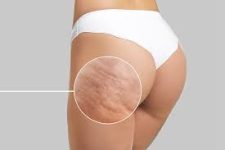Soaking Your Feet in Relaxing Jelly!
7 min read
This post may contain affiliate links, which means I may receive a small commission, at no cost to you, if you make a purchase.
What is a jelly pedicure? If you haven’t heard of it before, you should absolutely check it out.
It’s a soothing and relaxing unique pedicure experience.
And while jelly pedicures do have a sense of novelty to them, the jelly used in these pedicures is specifically formulated to help keep the skin on your feet and your toenails in tip-top shape!
Want to learn more about this pedicure that’s steadily becoming all the rage? Continue reading and discover what jelly soak pedicures are!
What Is a Jelly Spa Pedicure?
A jelly pedicure, or jelly soak pedicure, is a spa or salon treatment wherein you soak your feet in warm water and jelly crystals.
The jelly crystals, when mixed with warm water, turn into a gel-like soak, which helps keep the skin around your feet healthy.
Plus, alongside providing a unique and soothing texture for your feet, the jelly crystals are specially formulated with essential oils, minerals, and botanicals that help relax you and nourish your skin.
Some popular additional jelly pedicure ingredients that your salon may offer include the following natural ingredients:
- Aloe vera helps in calming irritated skin, reducing inflammation, and reducing aches and pain for tired feet.
- Green tea can be found in some jelly soaks for its antioxidant content and soothing benefits. Other than helping fight free radicals, it also helps moisturize the skin on your feet.
- Lavender in jelly pedicures brings calming and soothing effects,
- Milk and honey are often used in jelly soaks to help moisturize and hydrate the skin around your feet.
- Pineapple extract, which is known to contain bromelain, a combination of enzymes that helps exfoliate the skin, is also another popular ingredient.
What To Expect During a Jelly Soak Procedure
When you go to a salon or spa for a jelly pedicure, you can expect a similar procedure to a foot spa.
Here’s what you should expect for your jelly pedicure appointment:
- Mixing: The pedicurist will set up your jelly soak by filling a basin with warm water and mix in the jelly pedicure powder you choose. When the powder dissolves in warm water, it turns the water into a jelly-like substance.
- Soaking: You will then soak your feet in the jelly for around 15 to 20 minutes. This allows the gel to moisturize your skin, exfoliate, and nourish it as it releases its skincare ingredients into your skin.
- Massaging: The pedicurist will gently massage the area around your feet. This helps exfoliate the skin on the area even further or soften hard calluses if needed.
- Rinsing: The pedicurist will then rinse your feet with warm water and use a towel to pat them dry. They may also apply moisturizer onto your skin, to seal in the hydration.
- Grooming: After the soak, the pedicurist will proceed with nail cleaning and trimming.
What Are the Benefits of a Jelly Pedicure?
Being different and having a novel concept is not the main draw of this salon procedure.
There are numerous jelly spa pedicure benefits you may not get from traditional pedicures.
But what are the benefits jelly pedicures can provide? Here are some to consider:
- Jelly soaks hydrate and moisturize. The jelly is specifically formulated with natural skincare ingredients to help maintain the health of your skin around your feet by providing moisture and hydration.
- Jelly soaks are relaxing and soothing. Apart from the soaks being warm, which helps with aches and sore feet, the soft and gentle gel texture of the jelly helps soothe your feet and release stress.
- Jelly soaks exfoliate the skin. Some jelly crystals have mild natural exfoliants, so soaking the skin in these mixtures helps remove dead skin cells from your skin. This results in the skin around your feet looking smoother.
Jelly Soak Drawbacks
While there are many benefits to a jelly spa pedicure, it also has some potential cons.
Here are some of the common drawbacks you may experience:
- Allergic reactions. A select few individuals may experience allergic reactions to the jelly soak pedicure due to the ingredients in the jelly pedicure kit. If you have any allergies, check the ingredients list beforehand.
- Difficulty cleaning. Some jelly pedicure reviews mentioned that they had a tough time cleaning up residue from the jelly soak after getting the pedicure. Extra effort may be required because of the clingy jelly substance.
- Inaccessibility. Jelly pedicure procedures are not as accessible as traditional pedicures.
- Price. Compared to traditional pedicures, the price of jelly pedicures is higher because of their added skincare benefits and unique and relaxing experiences.
Jelly Pedicures vs. Traditional Pedicures: What’s the Difference?
While most people are familiar with the traditional pedicure, many might think that jelly pedicures are the same but have different textured soaks.
That’s not exactly the case. While they are part of self-pampering and caring for your feet, they have similarities and differences that you need to know to decide what to get.

Jelly pedicures and traditional pedicures do have the same goal in mind, which is to keep your feet in tip-top shape. However, how they do it differs.
Check out the differences:
| Aspect | Jelly Pedicure | Regular Pedicure |
|---|---|---|
| Treatment Method | Soaking in a gel-textured mixture made from jelly crystals. | Some have a quick wash or foot bath, but mainly directly to toenail care. |
| Skincare Focus | Emphasis on skincare, nourishment, and hydrating your feet. | Primarily for grooming toenails and feet. |
| Exfoliation | Contains ingredients for exfoliation and dead skin removal. | Some pedicures offer exfoliation if requested. But it’s not the primary focus. |
| Thermal Element | Nourishing, hydrating, and rejuvenating the skin. | No specific focus on warmth or aromatherapy. |
| Nail Care and Grooming | A jelly pedicure comes with nail shaping and grooming but the main priority is the soak. | This is the primary focus of a traditional pedicure. One that has no foot bath will only do this part. |
| Overall Goal | A jelly pedicure comes with nail shaping and grooming, but the main priority is the soak. | Grooming toenails, making feet look nice, and overall foot health. |
Traditional pedicures focus on toe-nail care. It’s leaning more toward grooming your feet and toenails instead of focusing on skincare and relaxation.
Who Should Get Jelly Soak Pedicures?
Jelly soak pedicures are becoming all the rage, but who exactly can benefit from it?
All Skin Types
This may seem like a cop-out answer, but almost everyone can benefit from a jelly pedicure. Jelly soaks are also generally safe for all people, and many can reap its positive effects.
These pedicures release stress and relax while helping you achieve better and healthier skin around your feet.
The only people who should avoid these pedicures are those with sensitivities or allergies to any ingredients used in the soak.
People With Foot Concerns
Jelly pedicures can also be beneficial for those with foot concerns.
- Callused skin
- Foot swelling and pain
- Tired feet
- Cracked heels
- Dry cuticles
Thanks to their skincare ingredients, jelly pedicures are ultra-hydrating. As such, this treatment can help treat cracked skin and nourish toenail cuticles.

Frequently Asked Questions
Are Jelly Pedicures Safe?
Overall, jelly pedicures do not have any harmful side effects and are generally safe to be used by people of all skin types.
These soaks are usually made of plant-based ingredients, including the added skincare extracts and essential oils used.
Additionally, pedicurists in good salons and spas are trained in the procedure, so you are in good hands.
The only people who should be concerned are those with known allergies to the ingredients in the jelly soak.
What’s the Difference Between Paraffin Wax Pedicures and Jelly Pedicures?
Both paraffin and jelly pedicures provide similar moisturizing and hydrating benefits to your feet. They also remove dead skin cells and calluses on your feet.
While both feel warm and relaxing on the feet, the difference lies in the materials used. Unlike jelly soaks, paraffin pedicures use paraffin wax that eventually hardens when it cools off.
Paraffin provides the same relaxation and moisturization benefits of a gel soak but without the gentle massage from the texture and nourishing skincare ingredients added to the jelly soak.
Can I Do a Jelly Soak at Home?
Yes! More and more jelly foot spa soak brands are coming out with jelly spa pedicure kits and DIY jelly pedicure supplies that are more accessible like this Crafts and the City SOO Jelly Pedicure Packs.
These jelly soaks are super easy to use! You just need to mix the gel soak powder with warm water and wait for the gel to form.
You can then mimic what you usually do with your pedicurist at a spa with at-home jelly pedicure supplies.
Feel the Wonders of Jelly Pedicure
The jelly pedicure is a luxurious and innovative treatment that pampers your feet and provides numerous benefits for your skin.
With its soothing properties and unique texture, it offers a one-of-a-kind spa experience that leaves your feet feeling refreshed, rejuvenated, and ready to take on the world.
Whether you’re looking to treat yourself to some DIY self-care or simply want to indulge in a spa day with friends, the jelly pedicure is a fantastic choice!
So don’t hesitate to schedule your appointment and experience this delightful pedicure for yourself. Your feet will thank you!






